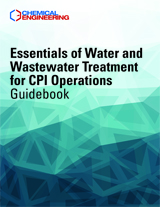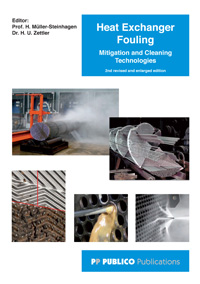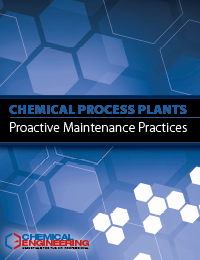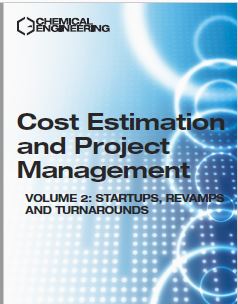Description
Treating inlet water so it is suitable for use in the process plant, and treating industrial wastewater so it is suitable for either reuse in the plant or discharge in accordance with all regulatory requirements and sound environmental practices, are major undertakings for all chemical process industries (CPI) facilities.
This Chemical Engineering Guidebook provides a wealth of insight and practical engineering recommendations for professionals involved in water- and wastewater-treatment activities. Some of the engineering articles contained in this guidebook cover mechanical options, such as different options for filtration, to remove particulate matter (with articles covering, for instance, selection, operation and troubleshooting tips for filters and filtration systems and sludge processing).
Other areas focus on biological treatment routes, with engineering articles discussing how to select and optimize the microorganisms needed to degrade organic contaminants and other chemical pollutants, and engineering recommendations for maintaining and troubleshooting activated-sludge systems. Find detail on the complex treatment systems that are available to treat wastewater so it is suitable for reuse as an inlet water source. Additional coverage provides guidance on pumps, valves and piping, all of which are ubiquitous in any water- or wastewater-treatment system design.
As an added resource, several articles included provide practical engineering guidance on project management and cost estimating during capital projects.
Delivered in a PDF format, 158 pages.
Table of Contents
Fact at Your Fingertips: Non-chemical Water Treatment
Fact at Your Fingertips: Filtration Testing and Slurry Conditioning
Modern Water-Treatment Challenges
LNG and other facilities that are expanding due to the shale-gas boom face specific challenges when it comes to ensuring the purity of the inlet and outlet water
Challenges of Drying Sticky Wastewater Sludge
In wastewater-sludge drying and dewatering operations, many issues arise from the sticky properties of the sludge. Here are some insights to address them
Filtration and Separation During Chemical Process Operations: Avoid Common Errors
The seven commonly made mistakes discussed here often lead to poor filtration and separation performance and many associated problems
Facts at Your Fingertips: Industrial Microorganisms
Harnessing Biotechnology: A Practical Guide
Biotechnology is increasingly proving its ability to address chemical industry challenges. An engineering-focused approach — bioengineering — is vital to successful industrial application
Biological Wastewater Treatment: Maintaining the Needed Microorganism Population
Activated sludge processes are inherently complex. Proper system design, operation and maintenance are essential to adequately break down target organic materials
Biodegradation and Testing of Scale Inhibitors
Progress is being made toward better performing and more biodegradable scale inhibitors for water treatment
Cooling Towers: Managing Tighter Water-Discharge Regulations
Tightening regulations for cooling tower water discharge quality are requiring plant engineers to evaluate enhanced treatment options, sometimes including zero-liquid-discharge systems
Engineering for Plant Safety
Early process-hazards analyses can lead to potential cost savings in project and plant operations
Chemical Process Plants: Plan for Revamps
Follow this guidance to make the most of engineering upgrades that are designed to improve plant operations or boost throughput capacity
Facts at Your Fingertips: Water Treatment Technologies
CPI Water and Steam Chemistry
Careful control of water and steam chemistry at CPI facilities can pay off handsomely in reliable operation
Managing Small and Medium-sized Capital Projects
A real-life example is provided to show how to stay on program and within budget
Plot Plan Design: Process Requirements
It is important to conceptualize plant layout in terms of both ideal location and optimal geographical positioning of equipment components
Facts at Your Fingertips: The Impact of Off-BEP Pump Operation
A Primer on Reverse Osmosis Technology
Desalination by reverse osmosis is a key technology for a water-constrained world. Discussed here is its use in industrial water treatment and drinking-water production
Valve-Selection Best Practices
Precise combinations of valves and other equipment lead to process success. A biopolymer fermentation process provides an example of proper valve selection
Piping-System Leak Detection and Monitoring for the CPI
Eliminating the potential for leaks is an integral part of the design process that takes place at the very onset of facility design
Optimizing Pressure Relief Systems
Alternative designs for pressure relief systems may offer investment cost savings
Modern Concepts in Makeup Water Treatment
Technologies offer new alternatives for water treatment
Facts at Your Fingertips: Design and Operating Principles for Bioprocesses
Technology Profile: Ethylene Production via Cracking of Ethane-Propane
An Overview of Filtration: Understanding how different filtration methods work leads to a more informed decision when selecting a filtration system
Wastewater: A Reliable Water Resource
The CPI and other industries are benefitting from reclaimed water for utilities as well as process needs
Strategies to Minimize Wastewater Discharge
As industries evaluate the viability of zero-liquid discharge, the advantages of low-temperature evaporation should be considered
Facts at Your Fingertips: Industrial Adsorbents
A Universal Equation for Designing Pipelines
The pipe-flow equation presented here can be used to properly and easily size pipelines for liquid, vapor and two-phase flow. Example calculations are also shown
Calculate NPSH with Confidence
Determining net positive suction head (NPSH) can be confusing, but with these guidelines, engineers can avoid the pitfalls of incorrect calculations
Treating Wastewater for Industrial Reuse
Secondary treated wastewater from municipal plants can be a water resource for industry. Important water characteristics and treatment options are discussed
Strategies for Water Reuse
Membrane technologies increase the sustainability of industrial processes by enabling large-scale water reuse
Condition Monitoring Methods for Pumps
Applying condition monitoring tests to pumps can save costs by optimizing overhaul scheduling




